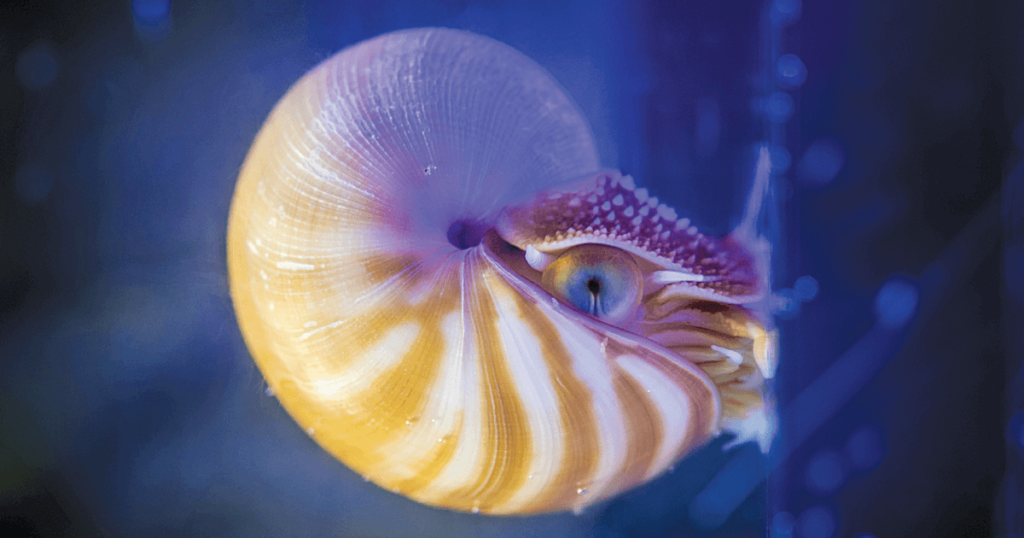
Although the chambered nautilus has been around for hundreds of millions of years, it does not readily disclose its secrets. This cephalopod, with its tentacle-like cirrus and lustrous shell, is a deep-sea scavenger: odd and obscure, challenging to observe, even more challenging to breed. Inside the husbandry division of the Monterey Bay Aquarium, however, the aquarists (those in charge of the marine life) have been carefully monitoring 150 chambered nautilus eggs, half a dozen of which have hatched since July. No other hatchling in captivity has survived more than a few years. “The life cycle of the chambered nautilus in the wild remains a mystery,” says Ellen Umeda, one of the aquarists. “No one has seen an egg in the wild, and young hatchlings are rarely seen. Therefore, we don’t know what depths they inhabit, the temperatures they prefer, or the foods they eat. This makes finding the perfect conditions for these young chambered nautiluses a challenge.”
Working with a delicate and mysterious hatchling creature in conditions other than its native habitat requires speculation and informed action. When they reach adulthood, Umeda says, “nautiluses in the wild inhabit depths greater than 100 meters, where the pressure is much higher. We hope to use pressure chambers to help mimic the high-pressure conditions at depth. Pressure is thought to play a role in chamber formation and buoyancy, so we’re hoping to see how these conditions might affect shell growth in hatchlings. The key is to stay optimistic and try to make the most out of this rare opportunity.”

